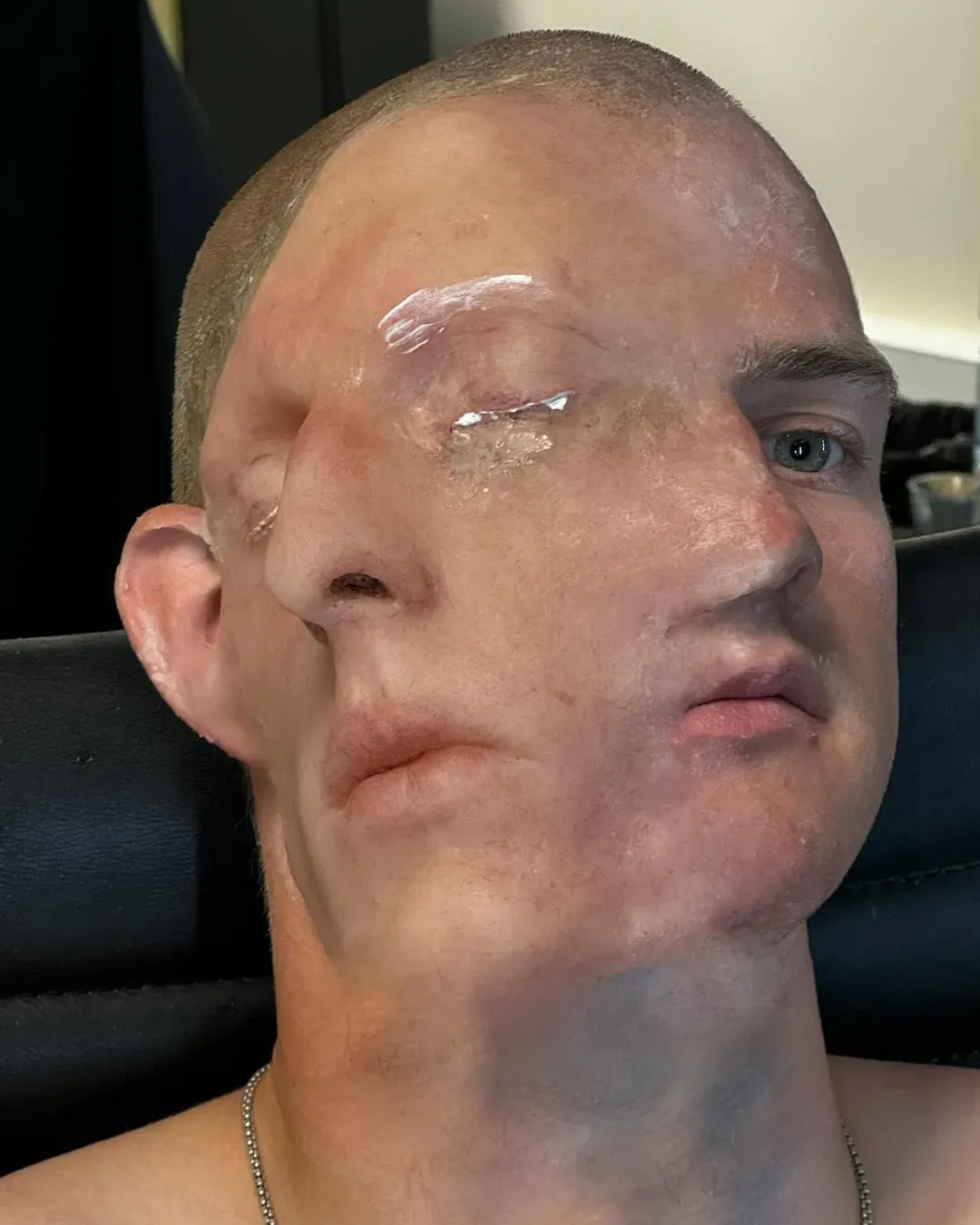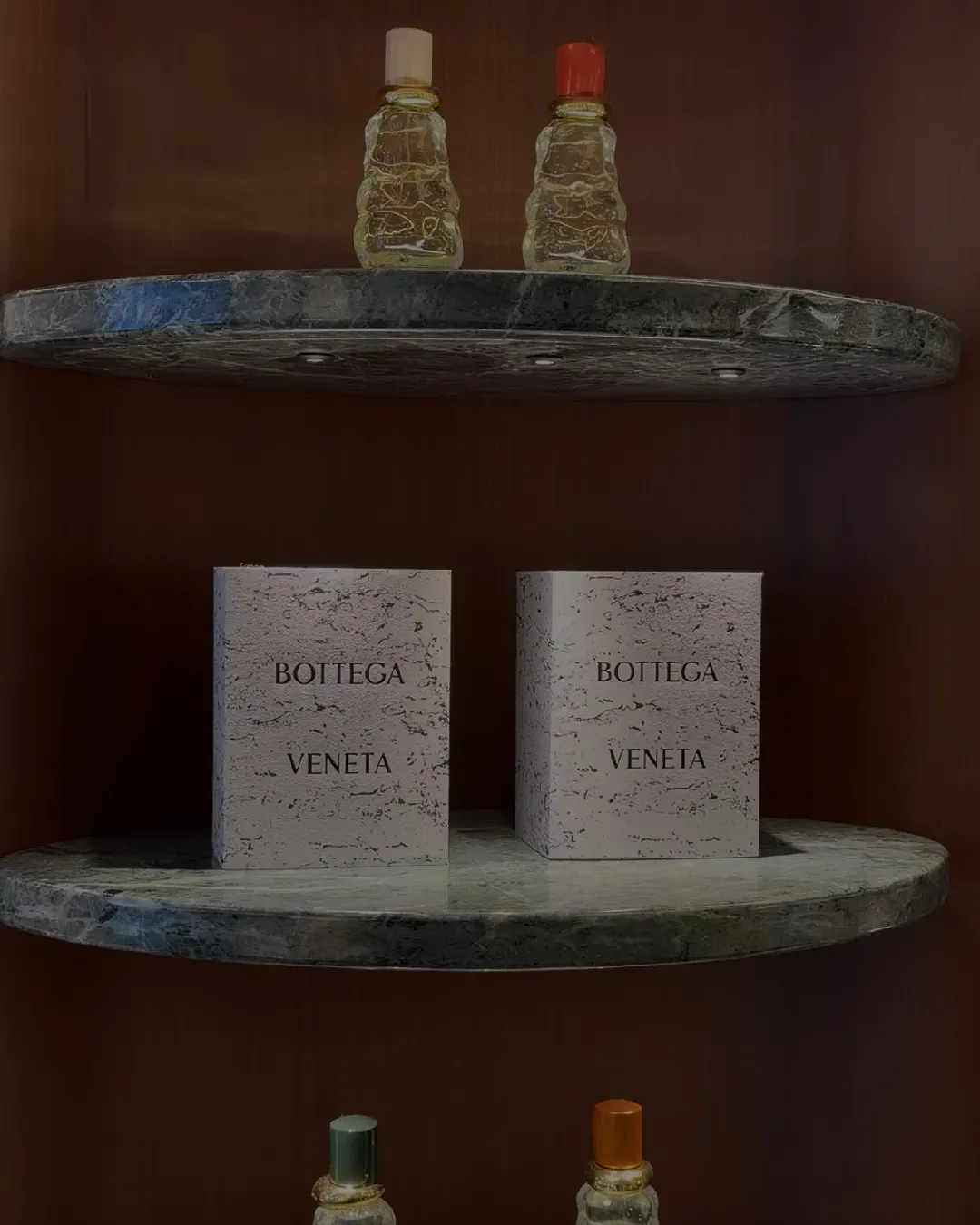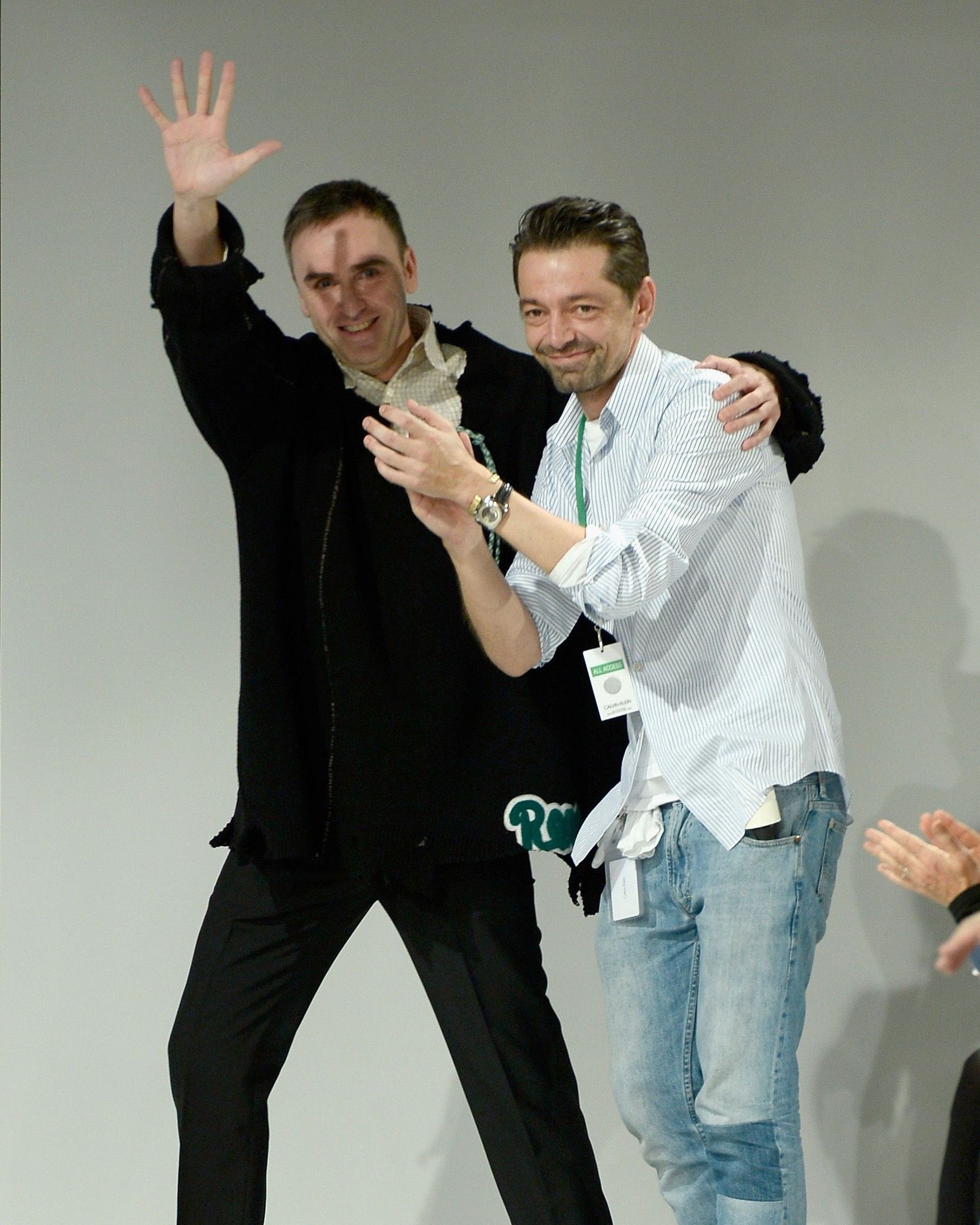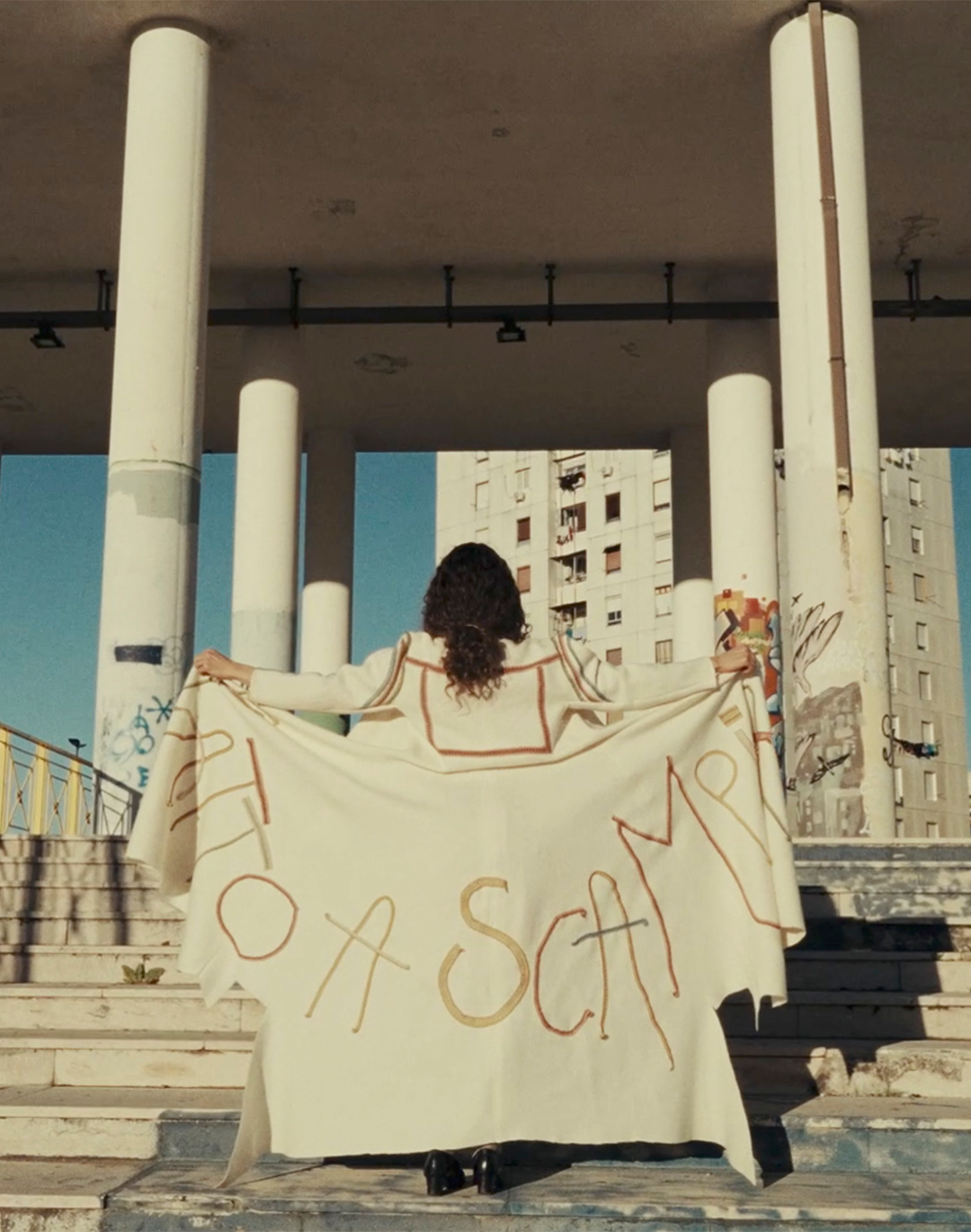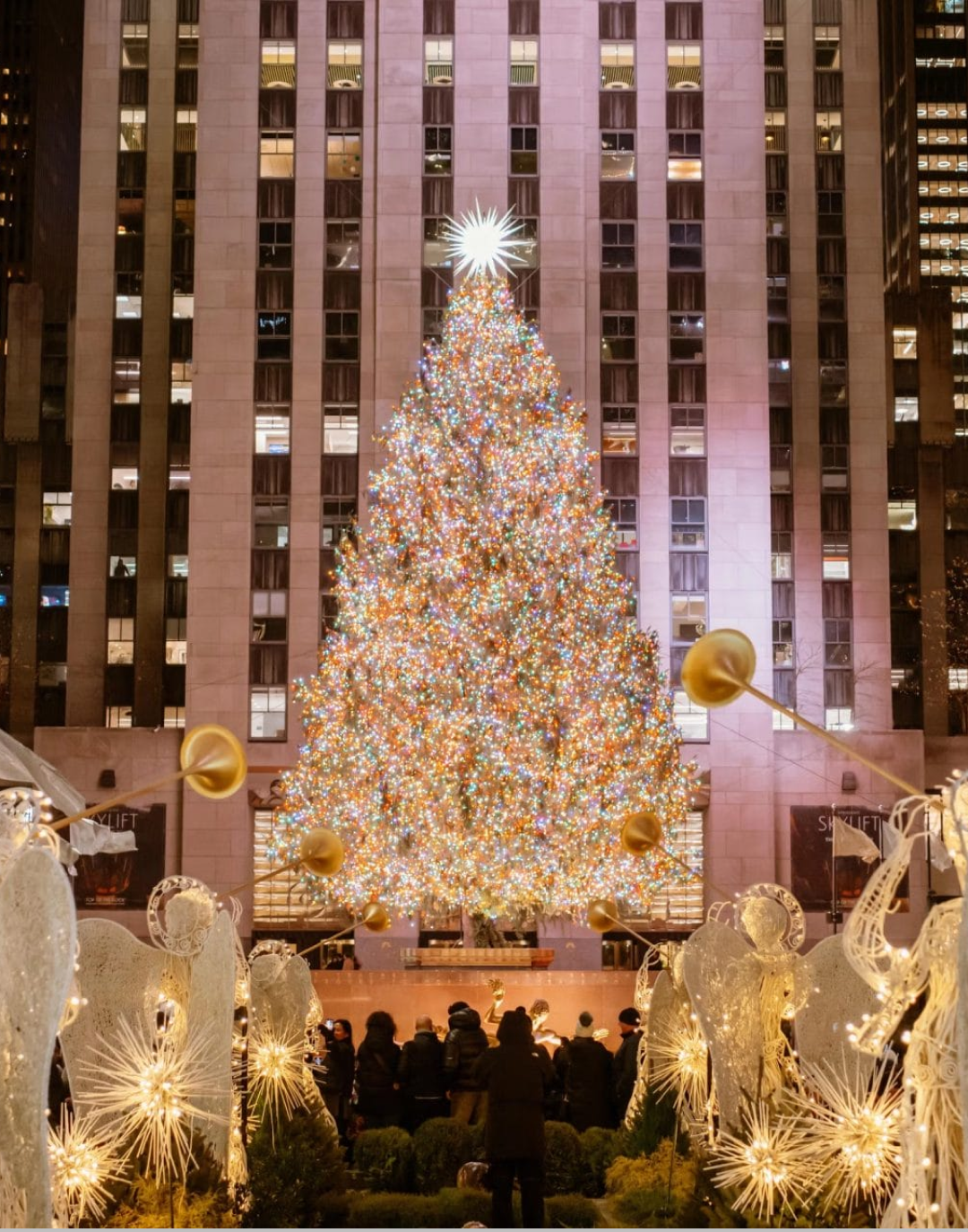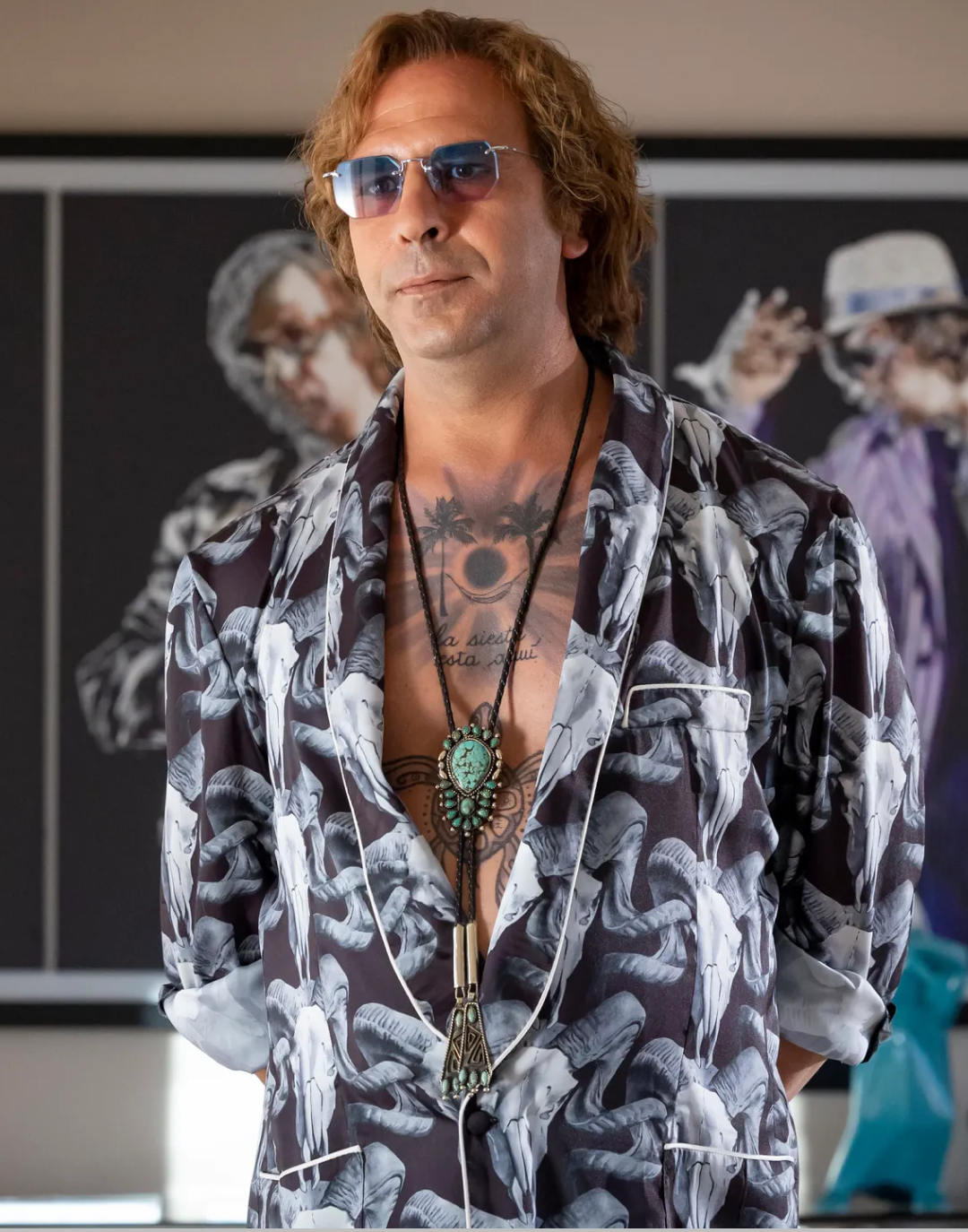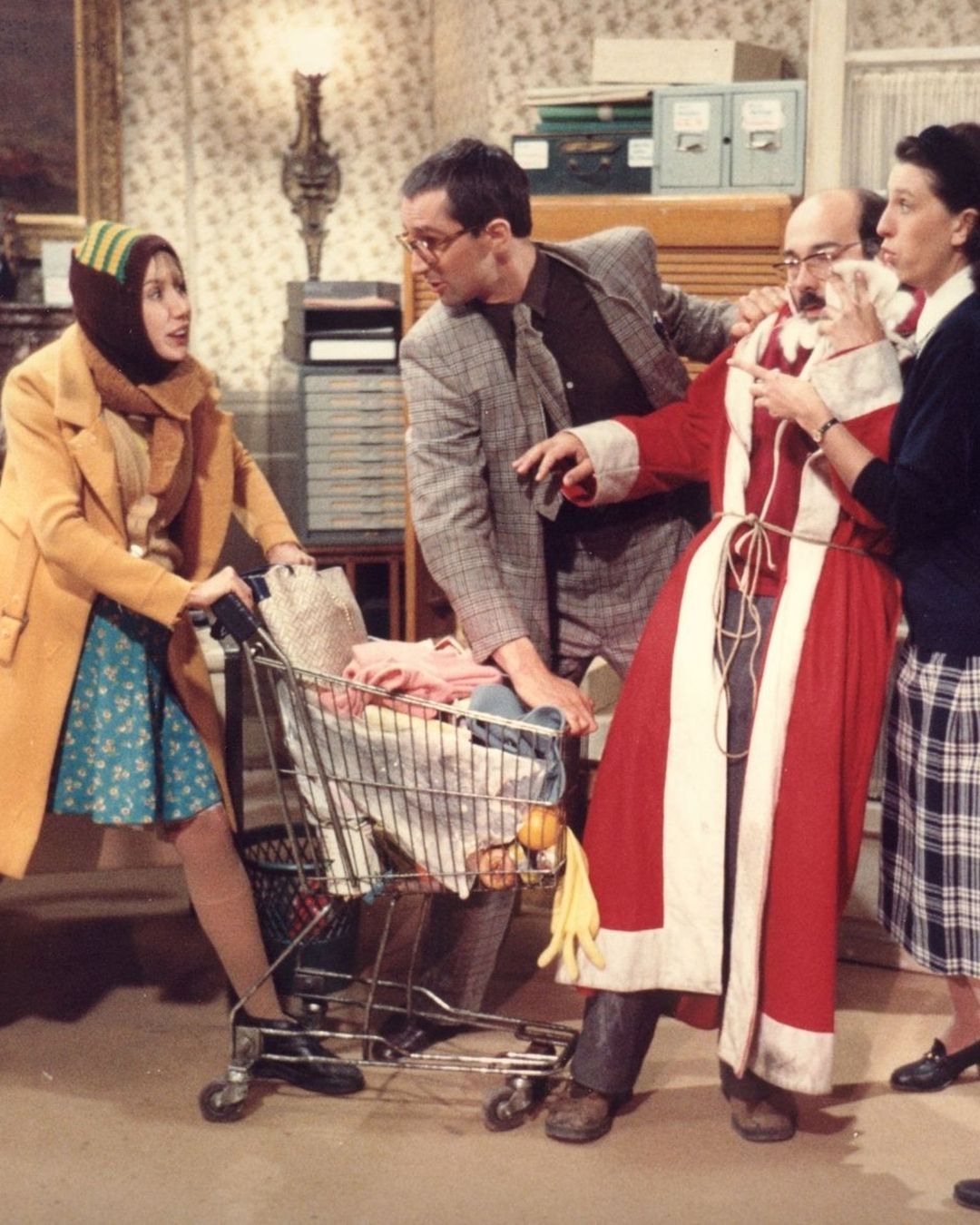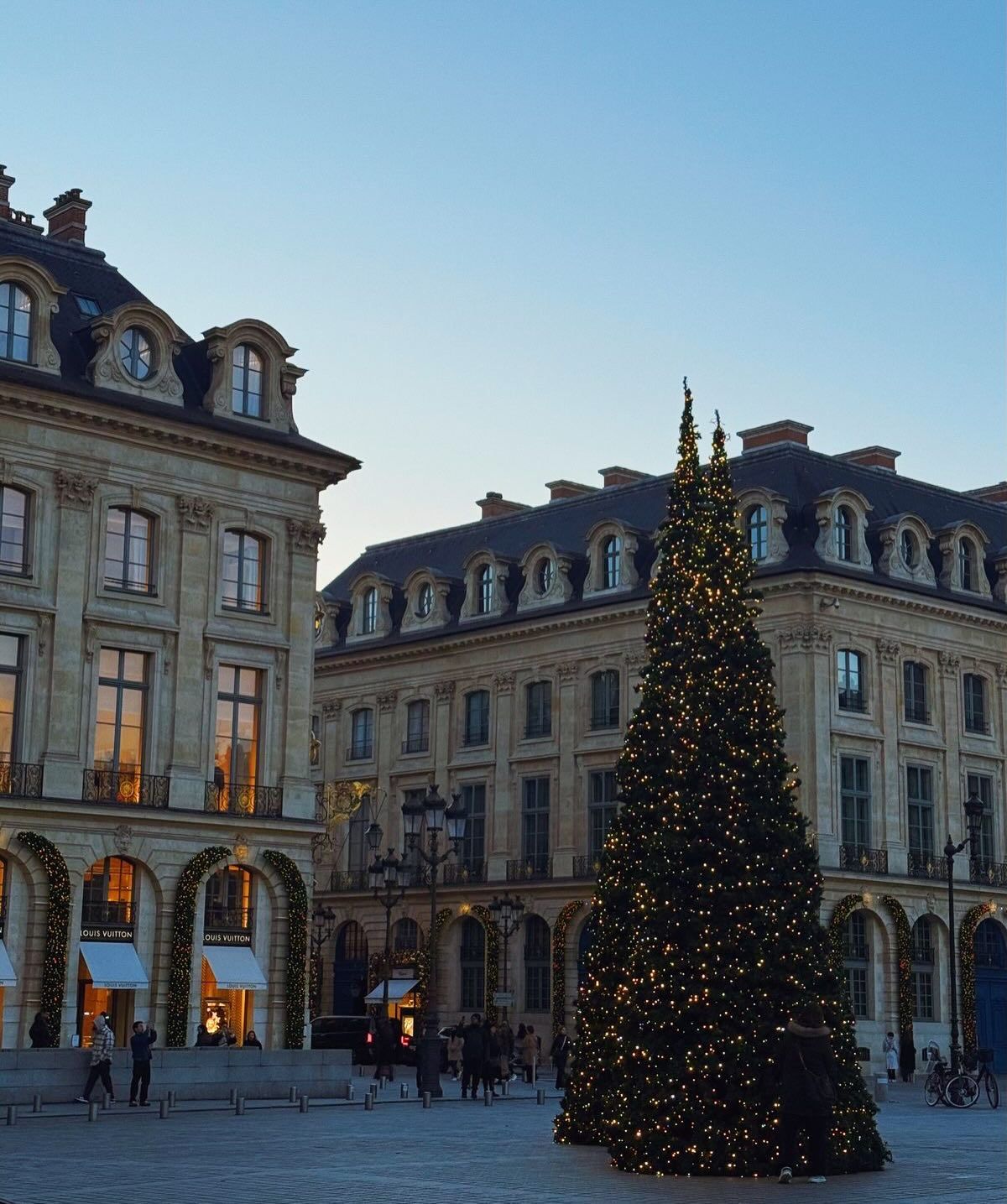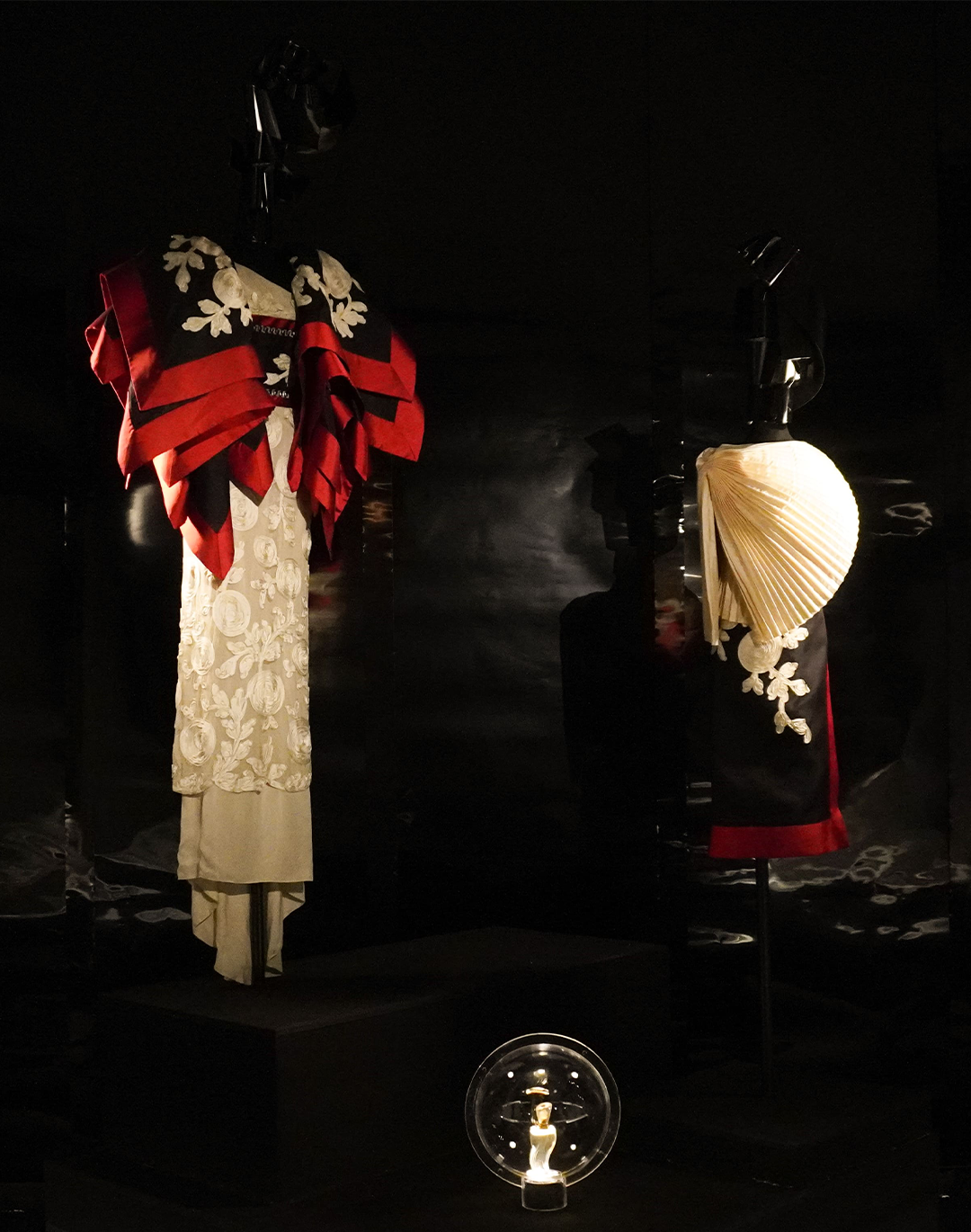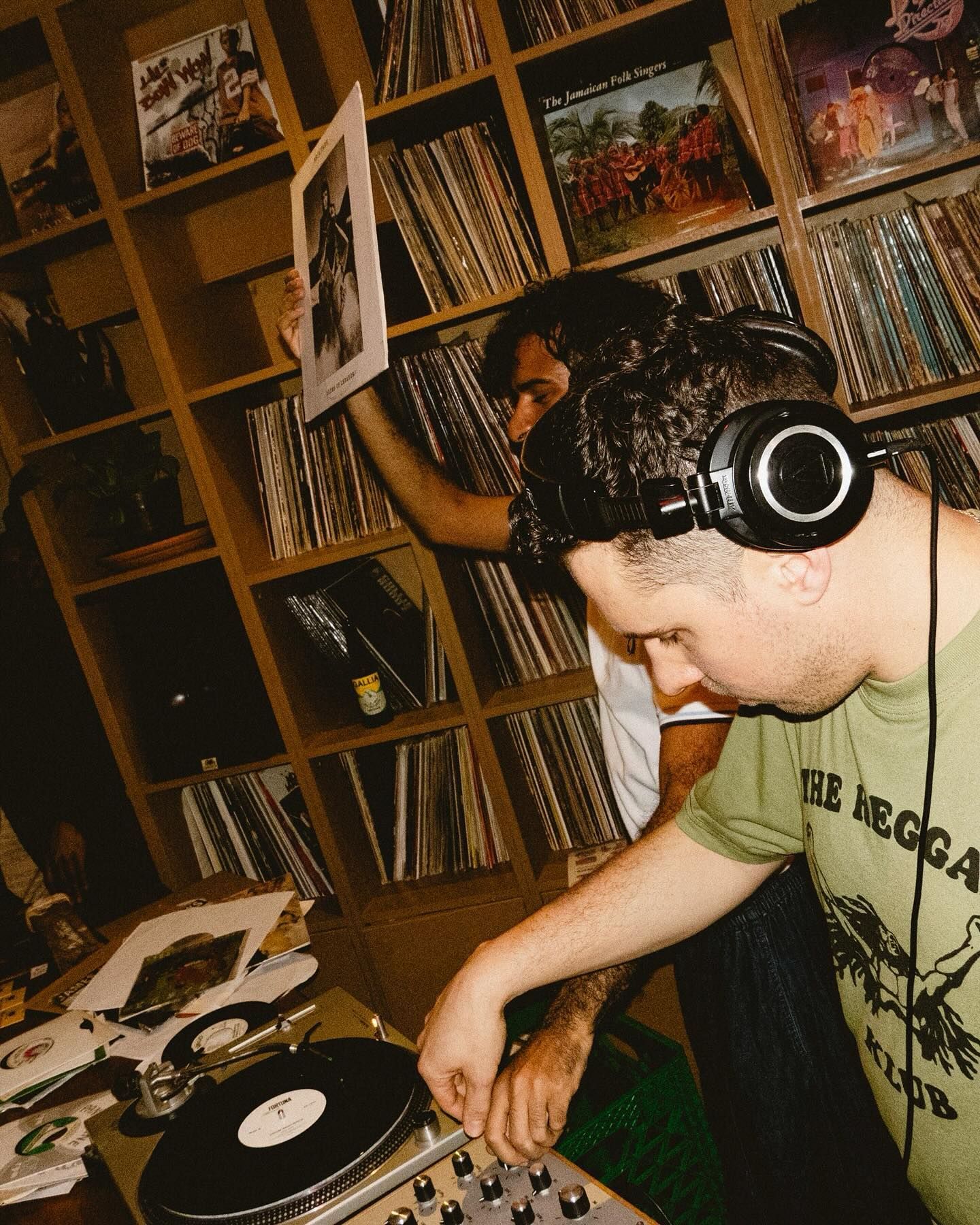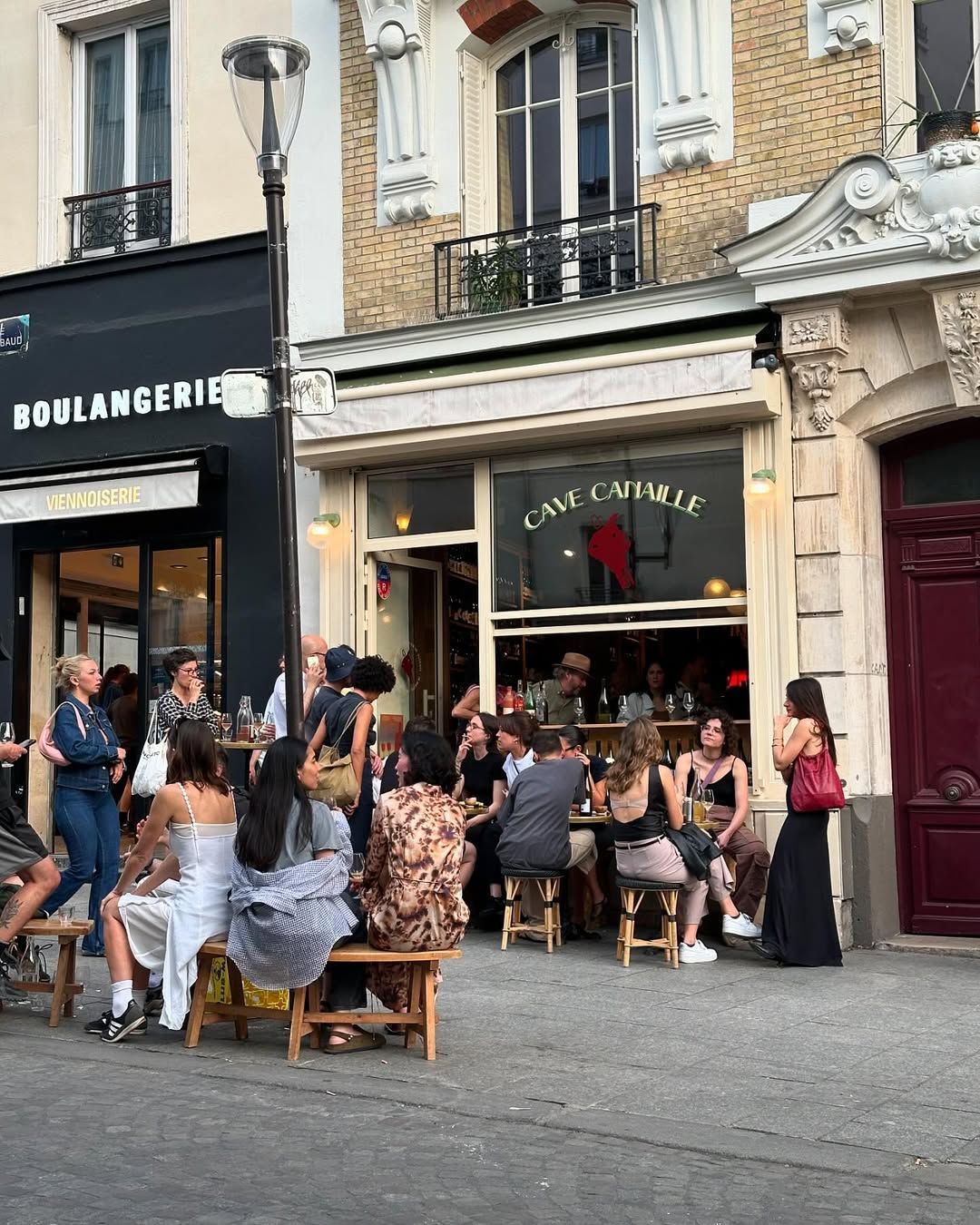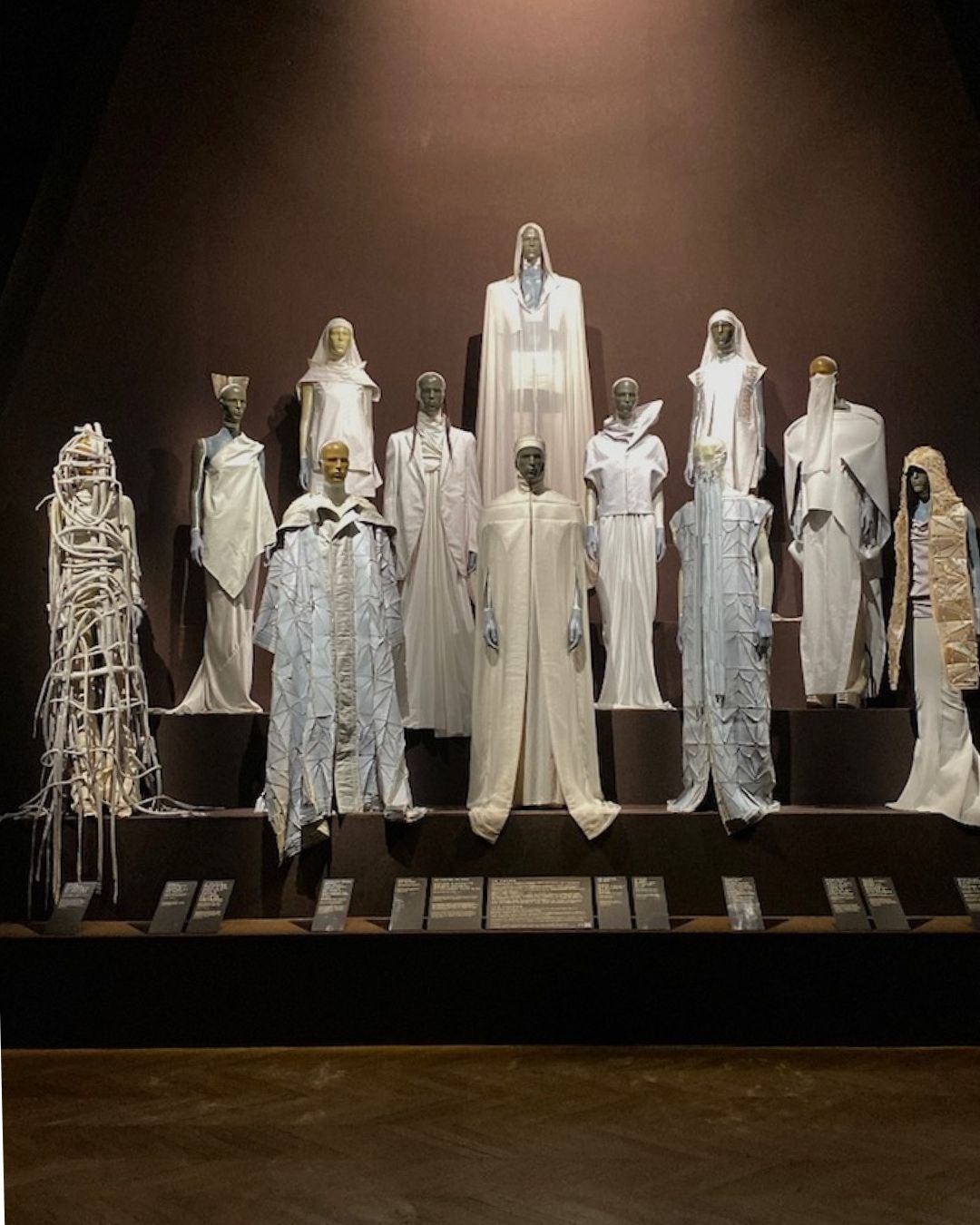
The exhibition on Rick Owens has just opened its doors, and it is already a must-see In order to understand its complexity, we met with Alexandre Samson, the museum's curator
Iconoclastic, open, and tender. Thus, in three words, Alexandre Samson, fashion historian, curator, and head of fashion collections from 1947 to contemporary creation at the Palais Galliera, summarizes Temple of Love, the retrospective tracing the career of Rick Owens, curated by him. Indeed, behind the columns of the Palais Galliera and its statues covered with a dark glittering fabric for the occasion, the more than thirty years of work and passion of the American designer are honored, in an exhibition not only iconoclastic, open, and tender, but also complete, captivating, and sometimes even moving. From the selected silhouettes to the flowers planted in front of the museum, the exhibition was conceived by Rick Owens, for Rick Owens, who, with a close and faithful relationship with the museum, was given carte blanche to organize the exhibition in his own way. Accompanied not by the rebellious music of Sisters of Mercy, but rather by a balanced alternation of classical music and excerpts from texts by Joris-Karl Huysmans narrated in French by the designer himself, the exhibition is thus a kind of visual autobiography, an open letter to the designer, to his fashion, but also to fashion for all, to the power of evolution, and to the strength of being oneself. To fully understand and appreciate its content, beyond merely enjoying the beauty of the silhouettes presented but to grasp their meaning and presence, we spoke with its curator, who kindly revealed to us the secrets of the exhibition, and of Rick Owens.
Secrets that go far back, specifically to the 1980s, when young Rick Owens began a career as a pattern maker in Los Angeles, his hometown, where he would meet years later his wife, muse, and collaborator, Michèle Lamy. From his beginnings in the United States to his recent collections, the exhibition opens with a dark room, yet far from gloomy, with walls covered in fabrics and adorned with various chapels containing the designer's looks, neatly arranged, gently organized. “We tried to start from Rick Owens' most important silhouettes in recent years. From his Parisian shows, and also from the silhouettes he kept, because he keeps everything,” explains Alexandre Samson. “So we decided to take the best, the most iconic, meaningful ones, and we tried to dig into the past, to find things he hadn’t kept but were his first silhouettes in Los Angeles, which were very difficult to find. To do so, we received help from former collaborators, who had kept pieces here and there that we had to recontextualize and precisely redate to try to form the first room of the Palais Galliera,” he continues. Darkness then gives way to light when you pass through the door to the second room of the exhibition, which, for the first time, lets in rays of sunlight by opening its curtains, without fear of damaging the pieces on display, in fact embracing wear and even welcoming it. A second room marked by the designer’s stylistic evolution, presenting his pieces chronologically, from his first collections created in Los Angeles with a dark and serious aura, made of black, leather, and iron, to his latest Parisian shows, more colorful, lighter, but also architectural and structured.
“Rick Owens’ primary goal is to elongate the silhouette as much as possible,” explains Alexandre. “You can see it in Hollywood when he draws inspiration from the 1930s, from their skirts, notably cut on the bias, which extend the silhouette, almost becoming trains, but also from long leather jackets with narrow sleeves, thanks in particular to jersey inserted into the sleeve to elongate it as much as possible. Rick Owens’ first steps in fashion are through this elongation,” he continues. “When he arrives in Paris, a certain complexity enters his work, through various influences that broaden his silhouettes, particularly brutalism, an architectural movement developing concrete, with one of its key architects Le Corbusier, giving them a kind of monolithic consistency. At that time, a search for complexity through pattern structure enters his work, stemming from Rick Owens’ knowledge and mastery as a pattern maker,” specifies the curator. A past as a pattern maker that will follow the designer throughout his career. Rick Owens does not sketch; he conceives. While we remember Christian Dior or Karl Lagerfeld for their quick, evocative fashion sketches, or Gabrielle Chanel and her way of assembling elements before instructing her seamstresses to execute her ideas, Rick Owens, for his part, attacks the garment through its structure.
@nssfrance Nous sommes passés par l’exposition au Palais Galliera, intitulée “Temple of Love”, consacrée à une rétrospective de la carrière du designer Rick Owens. #rickowens #rickowensonline #palaisgalliera #fashion #fashioninspo #rickowensdrkshdw #fashionexpo #paris #parisexpo #parisguide Hearing Damage - Thom Yorke
As you move through the rooms and silhouettes, several themes naturally emerge, such as the sacred, the mystical, even the biblical, but also literature and cinema. These are elements that shaped Rick Owens’ childhood, passed down by his father, as Alexandre explains: “His American origins did not prevent a tremendous attraction to European culture, which he cultivated through literature, particularly French, classical music, which we hear in the background as we explore the exhibition, and early cinema, the great classics of Hollywood.” His culture is very erudite. It is not only intellectual, but also religious. “He also received a Catholic education, something very marginal in the United States,” Alexandre adds, “He thus experienced a kind of marginality through Catholicism, religious attire, the representation of Christ on the cross, an aspect of religious liturgy. All these elements nourished his imagination, fostering a sort of fascination with the mystical and its expression, particularly through ritual. Something that is found in all his shows, which are each like a sort of grand religious procession.”
Just like his shows, presented for the past four years strictly across from the Palais Galliera, the exhibition is also structured as a form of procession. “There is no central piece in this exhibition,” explains Alexandre, “they all form a corpus, a whole, which explains, through how they are arranged, Rick Owens’ evolution, his perspective, and the richness of his influences. It is difficult to highlight one emblematic silhouette; they must be discovered together by the public. Each has something to say, something specific, unique to it. They may appeal through color, material, shape, silhouette, sometimes astonishing volumes that transform the body. It is precisely this desire to transform the silhouette and the body, almost reaching a very abstract result, that is Rick Owens’ strength.” A strength difficult to sum up in a hundred or so carefully selected pieces. Yet, the Palais Galliera has succeeded with this complete, self-sufficient monograph.
@nssmagazine It’s Rick Owens’ birthday #rickowens #fashion #avantgardefashion #rickowensonline original sound - nss magazine
The exhibition, much more than a simple display, is a true complete artistic project, a 360° experience, exactly like Rick Owens, his work, and his approach to creation, which, “in its richness, is equivalent in many ways to the production of many contemporary artists,” confirms our guide. It is an ode to this American designer of Mexican descent who, since 2003, has made Paris his setting, his home, his studio. A complete ode that highlights this designer with a dark yet brilliant side, “in his richness, his complexity, in the surprising links he has with French and European culture, in his personal, social, and political reflections in favor of difference, notably of gender, creative differences, origin as well, and how his work is sometimes militant, but nourished by great gentleness, especially in recent years.” Unprecedented in scope and format, the Rick Owens, Temple of Love exhibition offers a reflection on love, beauty, and difference through a monumental staging. “I hope the public will discover new things about Rick Owens, or even discover the designer entirely, in his theatricality, but also in the complexity of his silhouettes, their beauty, sometimes their glamour, the political commitment behind them in favor of minorities, artists. Our time needs this, it’s also why we’re showing it now,” concludes Alexandre Samson. As for Rick Owens, he “hopes each of you will find here, in one way or another, a reflection of yourself.”
The exhibition Rick Owens, Temple of Love is open from Tuesday to Sunday, from 10am to 6pm, and on Fridays until 9pm, until January 4, 2026. Find all practical information on the Palais Galliera website.






